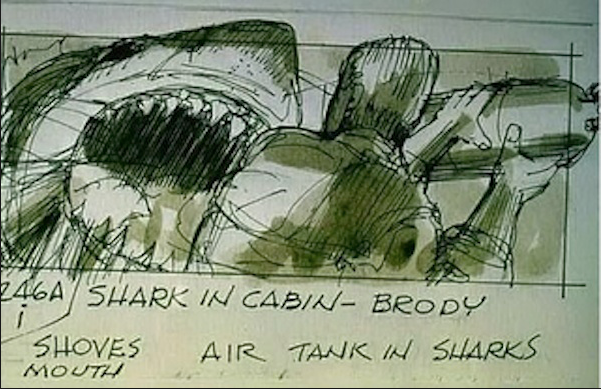

This is a sketch I recently worked up for a Big Idea discussion. I know. If only I could have been around to clean up Van Gogh’s brushwork, right?
In my defense, the drawing you see was sketched in the margins of a brainstorm, meant to give a very quick visual of a layout idea. But, when I showed the idea to my Art Director, it was invaluable in quickly relating the concepts.
Here are some tips on how to use sketching and storyboarding in your work.
1. Know what you hope to achieve and what your audience expects.
When I drew the breathtaking sketches above, I knew I’d be presenting them internally; they were for the creative team’s eyes only, and my team knows my drawings usually look like they were done while riding a horse at full speed.
Imagine a continuum. On one end, you have dashed down ideas on the backs of job briefs and napkins. There are stick figures and erasures and a general sense of mess. On the other side, you have storyboards so well-conceived they make you feel real emotion and a sense of action, like this iconic board from Jaws:
But whoa, whoa, you might be thinking, that’s a board from a movie. Of course it’s incredibly descriptive. But here’s a section from a board for a :30 spot from burger giant Jack in the Box:
It reads almost like a graphic novel, and this is for a :30 spot.
Here’s the point: Always take into consideration who is going to be viewing your work and what level of finish they’re expecting. If it’s colleagues, let your stick-figure-flag fly and jot on whatever you can to get the point across. Concept is king. But if it’s clients or people you know are likely to need a higher level of polish to buy-off on the idea, it’s best to either use a professional digital tool, use stock photography for images or hand the work to an artist.
2. It’s a drawing, not a short story.
I love words. But words have a very limited role in a storyboard.
A good rule of thumb is to use them only when the image itself can’t do the explaining. For example: If you’re working up a storyboard for a commercial, or some other medium that uses sound, consider briefly describing that sound. This can be as simple as describing a sound effect or music bed, or as relatively complex as including the relevant part of a script for a voiceover. Either way, your reader gets the idea of how sound works without an exhaustive description. In general, let your images do the talking.
3. Know what to include.
One of the most valuable parts about storyboarding and sketching is it shows what’s most important in your idea. If we take Jaws as an example, the film had a running time of two hours and ten minutes, and you won’t find a board for every second. (That’d be over 7,800 boards.)
Instead, storyboards and sketches make us find the most important moments and the key elements of a design and use those to illustrate our thinking. Crafting a storyboard or a series of sketches can be a kind of exploration. Where are my concept’s keys? What are the most necessary parts?
The other stuff? It’s a distraction at this point.
Some general tips and tricks: I’ve found sticky notes—your typical 3-inch by 3-inch pad—make a great start to any sketch or storyboard. You can easily put ideas on the wall to look at and can move frames around if you want to try new ideas. And, the small size means you can’t get too fussy with detail.
To that end, initial sketches and storyboards are a Sharpie’s job, not some needle-pointed art pen. Think big and don’t sweat the details.

